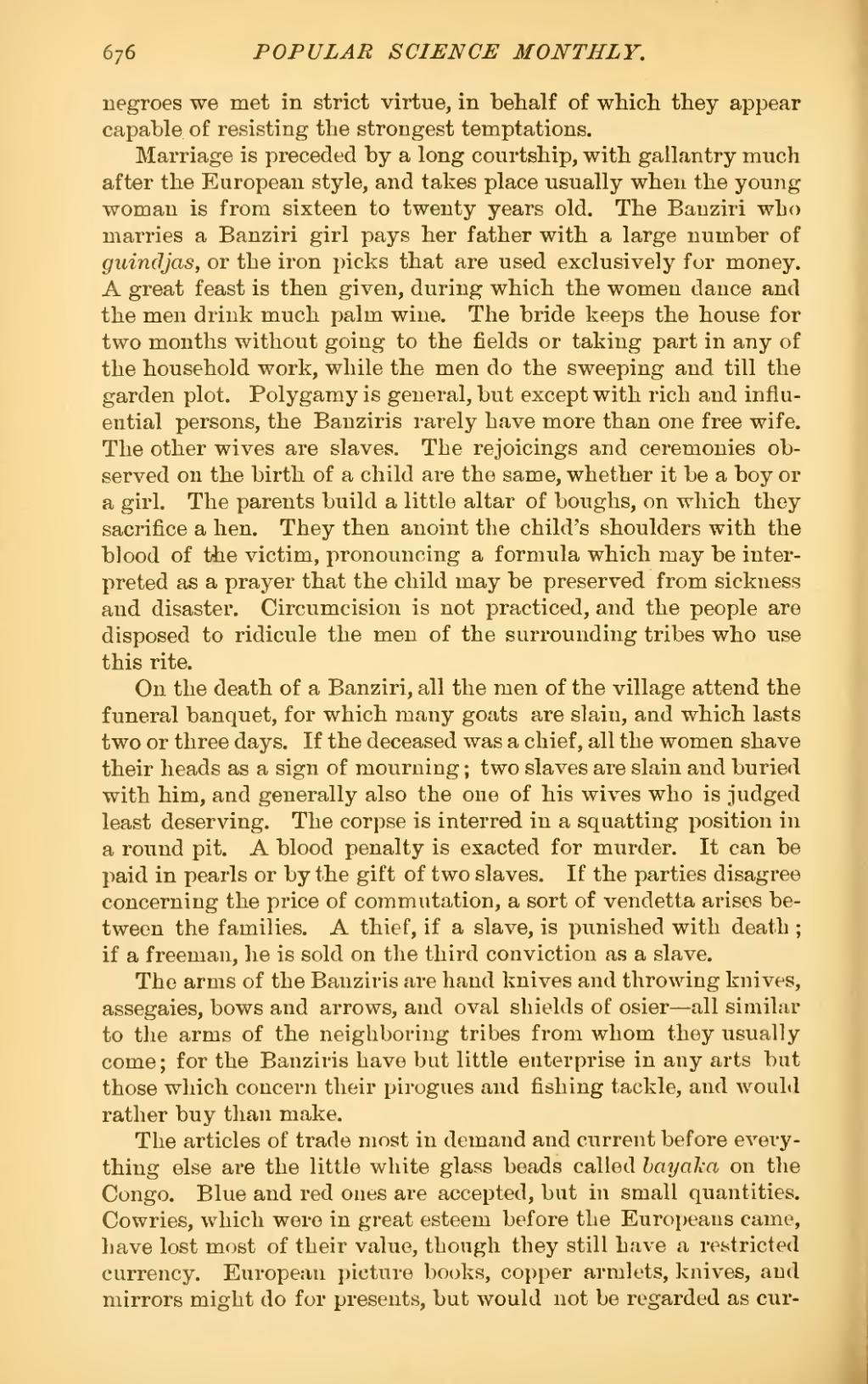negroes we met in strict virtue, in behalf of which they appear capable of resisting the strongest temptations.
Marriage is preceded by a long courtship, with gallantry much after the European style, and takes place usually when the young woman is from sixteen to twenty years old. The Banziri who marries a Banziri girl pays her father with a large number of guindjas, or the iron picks that are used exclusively for money. A great feast is then given, during which the women dance and the men drink much palm wine. The bride keeps the house for two months without going to the fields or taking part in any of the household work, while the men do the sweeping and till the garden plot. Polygamy is general, but except with rich and influential persons, the Banziris rarely have more than one free wife. The other wives are slaves. The rejoicings and ceremonies observed on the birth of a child are the same, whether it be a boy or a girl. The parents build a little altar of boughs, on which they sacrifice a hen. They then anoint the child's shoulders with the blood of the victim, pronouncing a formula which may be interpreted as a prayer that the child may be preserved from sickness and disaster. Circumcision is not practiced, and the people are disposed to ridicule the men of the surrounding tribes who use this rite.
On the death of a Banziri, all the men of the village attend the funeral banquet, for which many goats are slain, and which lasts two or three days. If the deceased was a chief, all the women shave their heads as a sign of mourning; two slaves are slain and buried with him, and generally also the one of his wives who is judged least deserving. The corpse is interred in a squatting position in a round pit. A blood penalty is exacted for murder. It can be paid in pearls or by the gift of two slaves. If the parties disagree concerning the price of commutation, a sort of vendetta arises between the families. A thief, if a slave, is punished with death; if a freeman, he is sold on the third conviction as a slave.
The arms of the Banziris are hand knives and throwing knives, assegaies, bows and arrows, and oval shields of osier—all similar to the arms of the neighboring tribes from whom they usually come; for the Banziris have but little enterprise in any arts but those which concern their pirogues and fishing tackle, and would rather buy than make.
The articles of trade most in demand and current before everything else are the little white glass beads called bayaka on the Congo. Blue and red ones are accepted, but in small quantities. Cowries, which were in great esteem before the Europeans came, have lost most of their value, though they still have a restricted currency. European picture books, copper armlets, knives, and mirrors might do for presents, but would not be regarded as cur-
